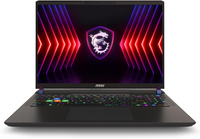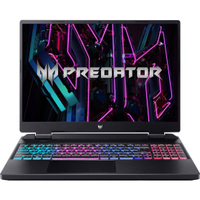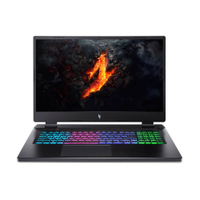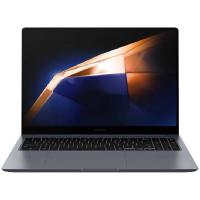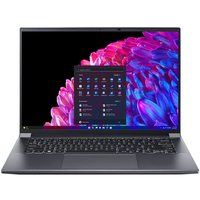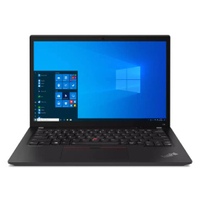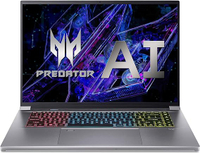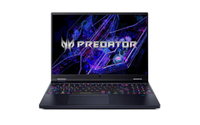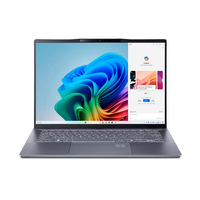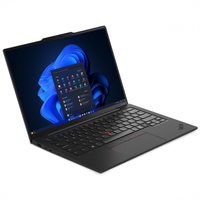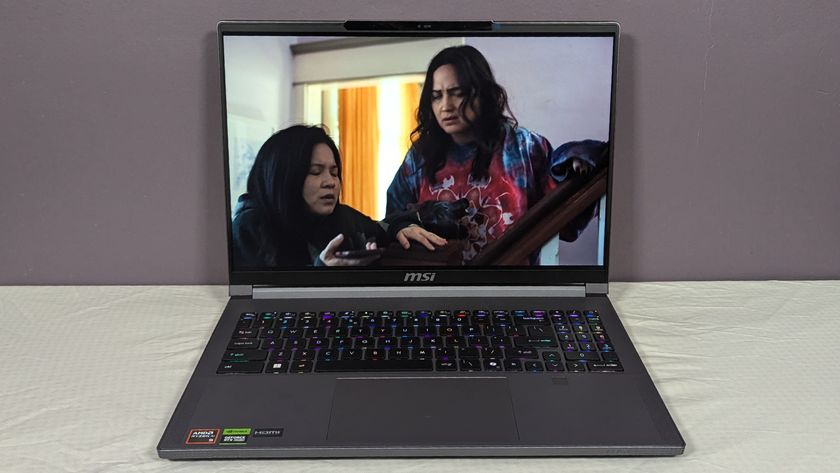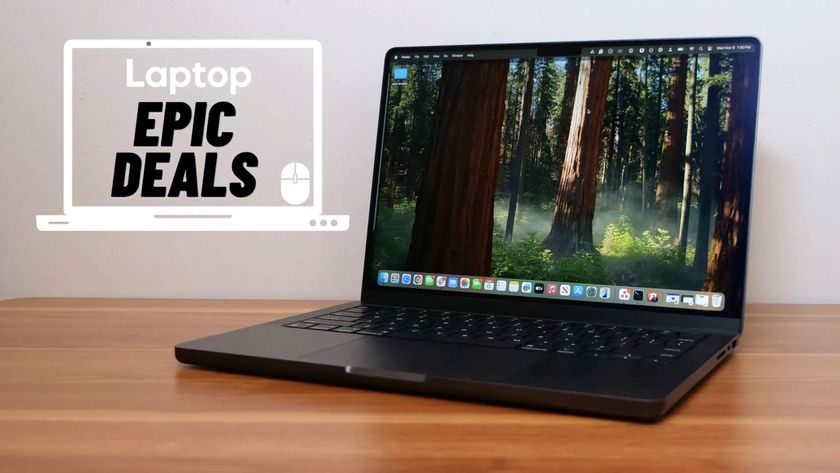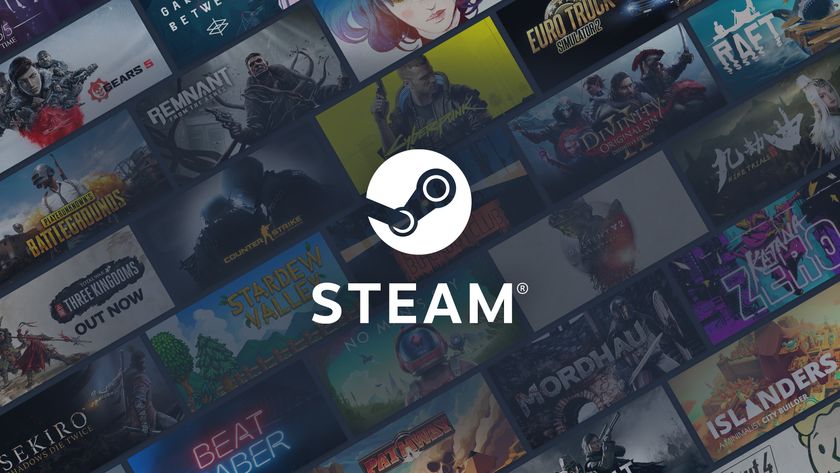Best Ultrabooks in 2025: My 5 favorite premium thin-and-light laptops
These are the best Ultrabooks you can buy right now
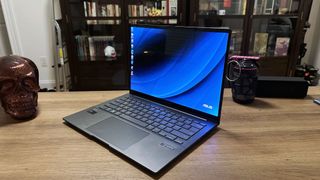
1. The list in brief
2. Best Ultrabook overall
3. Best budget Ultrabook
4. Best 2-in-1 Ultrabook
5. Best Ultrabook for business
6. Best Ultrabook alternative
7. Benchmark comparisons
8. Recent Reviews
9. FAQs
10. How to choose the right Ultrabook
11. How we test Ultrabooks
12. Why trust Laptop Mag?
The best Ultrabooks are considered the elite of laptops, Intel-powered machines so thin and powerful they dance between all-day marathons and peak performance. Whether you're a caffeine-fueled nomad or a jet-setting pro, an Ultrabook's your perfect partner, keeping pace with your relentless hustle. Forget clunky beasts weighing you down — these sleek speedsters let you conquer your to-do list with style, stamina, and the help of AI. Think thin, think powerful, think Ultrabook.
But beyond thin and light, what is an Ultrabook? An Ultrabook used to refer to a laptop that fit a very particular set of standards laid out by Intel. However, the moniker has been watered down, and the term is loosely applied to premium laptops that meet the thin and light standards.
Our selection isn't too different, however, we've also tried our best to pick Intel Evo-certified laptops — a more modern Intel platform that requires premium laptops to adhere to a strict set of standards including energy efficiency, fast charging, and responsiveness.
If you're looking for something thin, light, powerful, and portable, read on for our selection of the best Ultrabooks in 2025.

Rael Hornby brings decades of tech tinkering and enthusiasm to the table, as well as a broad history of technical support, web design, and journalism. As Laptop Mag's content editor and resident accessory reviewer, he interacts with several laptops to measure their strengths or weaknesses and see how peripherals can further enhance their potential.
Best Ultrabooks in 2025: The list in brief
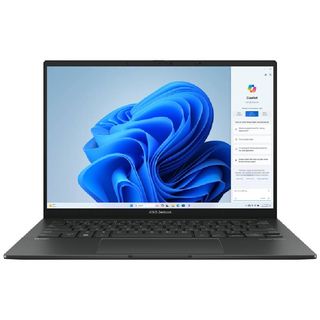
Best Ultrabook overall
The Zenbook 14 OLED's impressive near 16-hour battery life headlines its many great qualities. Intel Core Ultra performance and an attractive price tag are also sure to impress.
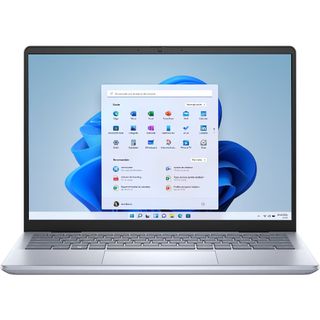
Best budget Ultrabook
A flattering price tag, Intel Core Ultra performance, and a 15-hour battery life solidify Dell's Inspiron 14 Plus as a top-tier budget buy and a solid all-around Ultrabook option.
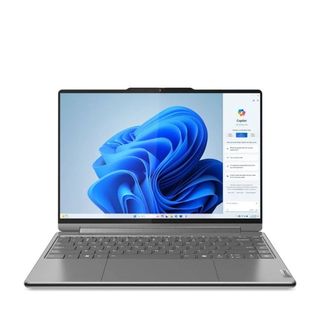
Best 2-in-1 Ultrabook
The ninth generation of Lenovo’s iconic Yoga 2-in-1 features an AI-ready, 14th-generation Intel Core Ultra 7 CPU and a truly gorgeous 2880 x 1880 OLED display.
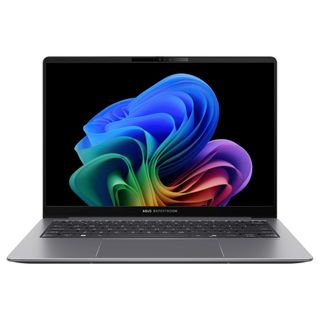
Best Ultrabook for business
Asus’ highly portable ExpertBook P5 offers great battery life, a sharp 2K display, and up to 120 total platform TOPS, enabling top-notch AI performance.
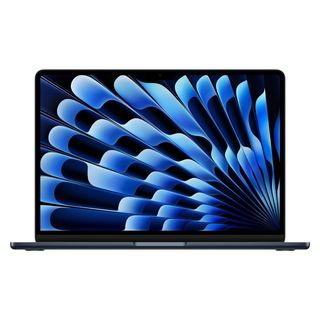
Best Ultrabook alternative
We know. While not technically an Ultrabook, seeing as it doesn't sport an Intel CPU, it's still a brilliant alternative that pushes the MacBook to new heights with the M3 chipset.
The best Ultrabooks in 2025
Why you can trust Laptop Mag
Best Ultrabook overall



Specifications
Reasons to buy
Reasons to avoid
Ever the tinkerers and tweakers of technology, Asus has once again updated its popular Zenbook laptop to feature Intel's latest Core Ultra chipset with Arc graphics, quality audio from Harman Kardon with Dolby Atmos speakers, and an OLED display.
The new Core Ultra 7 155H chipset, backed by 16GB of RAM and 1TB of SSD storage, offers solid performance across the board, making the Zenbook a fantastic option for most people for all but gaming and content creation.
However, Intel's latest chips are multitasking monsters and fly above the category benchmark averages in overall performance, video transcoding, and file transfer speeds.
Better still, the Zenbook 14 OLED's enhanced performance comes hand in hand with an incredible near-16-hour battery life — delivering a fantastic all-day computing option to most. This gives you the confidence to make the most of the Zenbook's portability from its trim (12.3 x 8.67 x 0.59 inches) and lightweight (3 pounds) frame.
Sweetening the deal further is the Zenbook's 14-inch, full-HD, OLED touchscreen display, which offers solid contrasts with crisp and vibrant colors. It's not perfect — the panel itself could be brighter — but issues like this can be forgiven when you factor in the Zenbook's secret weapon: a $799 starting price.
Asus' laptop strikes an incredible balance of performance, price, and practical use. It has great longevity of life and across-the-board improvements in key metrics. While it might not be the best laptop, the Zenbook 14 OLED is the best Intel Evo Ultrabook when factoring in its low cost and strong results.
See our full Asus Zenbook 14 OLED (Q425M) review.
Best budget Ultrabook



Specifications
Reasons to buy
Reasons to avoid
The term Ultrabook likely paints the image of an ultra price tag to go along with it. However, that's not the case. Most Ultrabooks lack a discrete GPU, meaning their costs can be far less than that of gaming, creation-class, or workstation laptops.
One gleaming example of a fantastic Ultrabook that won't empty your bank account is the Dell Inspiron 14 Plus, touting performance and battery life above and beyond its MSRP.
Starting with performance, the Inspiron 14 Plus is powered by Intel's new Core Ultra 7 155H CPU and backed by 16GB of RAM and 1TB of SSD storage. Intel's Core Ultra chipsets offer improved performance and efficiency, which is the secret to the Inspiron's impressive performance in our benchmark tests.
Those tests saw Dell's modestly priced laptop outpace the Asus Zenbook 14 OLED (Q425M) that tops this list and Apple's M3-equipped MacBook Pro 14 in all but single-core performance. Away from spreadsheets and graphs, these results translate into responsive computing and impressive multitasking potential.
Of course, buying on a budget will lead to some sacrifices. In the case of the Inspiron, this would be its 14-inch 2.2K display. While it's not dreadful, the Inspiron's screen is dimmer than our other top choices, and its DCI-P3 Color gamut could be wider. That aside, we did note some impressive visual contrasts and an overall good enough experience for most.
However, while Inspiron's Achilles heel is on display, considerable strength can be found in its battery life. During the Laptop Mag battery test, which times a device's lifespan through continuous web browsing over Wi-Fi at 150 nits, the Inspiron 14 Plus latest 15 hours and six minutes.
See our full Dell Inspiron 14 Plus (7440) review.
Best 2-in-1 Ultrabook



Specifications
Reasons to buy
Reasons to avoid
Powerful overall performance, a dazzling display, and a sturdy design make the Lenovo Yoga 9i (Gen 9) one of the best 2-in-1 laptops we’ve tested so far. Compared to its predecessor, this iteration promises the same great premium look and feel, but with much stronger performance.
Inside, you’ll find Lenovo’s iconic 2-in-1 equipped with a powerful 14th Gen Intel Core Ultra 7 155H processor, integrated Intel Arc graphics, 16GB of RAM, and 512GB of SSD storage — and these are just starting specs. Upgrade to 32GB of RAM and 1TB of SSD storage to get a multi-tasking beast with ample storage.
Even looking purely at this laptop’s base components, it’s a performance powerhouse able to juggle multiple demanding apps or programs at once, making it an ideal pick for work, school, or with its convertible form factor, entertainment.
Put to the test, the Yoga 9i outperformed its Zenbook 14 OLED and Envy x360 2-in-1 competitors in both overall performance and our file transfer speed test.
When it comes to style and special bonus features, this laptop excels as well. At first glance, the all-aluminum chassis with metallic, rounded corners screams premium. Opened up, the gorgeous 2K OLED display, which you can upgrade to 4K, takes center stage as a bright, vibrant masterpiece.
Add to that a satisfyingly clicky keyboard and an expertly designed Bowers & Wilkins rotating soundbar with punchy bass and crisp overall sound, and Lenovo’s Yoga 9i is truly an excellent value.
See our full Lenovo Yoga 9i (Gen 9) review.
Best Ultrabook for Business



Specifications
Reasons to buy
Reasons to avoid
The ExpertBook P5 (P5405) ticks all the boxes for being considered one of the best business laptops we’ve tested, while also boasting an incredibly lightweight, slim form factor that earns it a spot as one of the best ultrabooks.
Equipped with Intel’s Core Ultra 7 258V processor, 32GB of RAM, and 1TB of SSD storage, this business laptop excels at handling tab-hoarding and other productivity tasks, but where it truly shines is with its AI-powered tools.
With AI Meeting Minutes to transcribe meetings, AI Noise Cancellation to reduce background noise, AI Translate Subtitles to instantly translate languages during meetings, and more, the ExpertBook P5 will help you float through multi-meeting days with less stress. In addition to stronger AI capabilities, the laptop’s NPU helps it reach an exceptional 14-hour battery life.
Transforming the ExpertBook P5 into a full business workstation with peripherals is an easy feat thanks to a plethora of ports. Despite its sub-3-pound weight, this laptop features a pair of Thunderbolt 4/USB 4 ports, an HDMI 2.1 port, two USB 3.2 Gen 2 Type-A ports and a 3.5mm audio jack.
Past strong performance and a bevy of ports, the ExpertBook P5 dazzles with its bright 14-inch, 2.5K, 144Hz display, an effective keyboard, and surprisingly impressive bottom-firing speakers. All that said, the laptop’s best feature is easily its value. Despite all its snazzy features and powerful specs, this remains one of the most affordable business laptops we’ve reviewed.
See our full Asus ExpertBook P5 (P5405) review.
Best Ultrabook Alternative



Specifications
Reasons to buy
Reasons to avoid
For our final entry in this list, we're calling in a ringer. Yes, MacBooks don't technically qualify as Ultrabooks. However, they are lightweight, high-performance, long-lasting, premium laptops — beyond featuring an Intel chipset, pretty much nails all of the markers we're looking for with devices in this category.
Apple's latest 13-inch MacBook Air maintains the same price as its predecessor but improves performance and efficiency thanks to the brand's latest M3 chipset. This improved APU allows the MacBook Air to easily sail past the mainstream laptop average scores in our benchmark testing results.
From overall performance and video encoding to real-world multitasking testing, the M3-equipped MacBook Air excels at every turn. It's the same consistent MacBook experience we've seen since the switch to Apple Silicon, but it's taken up another notch in terms of output, including a battery life of over 15 hours.
The MacBook Air's Liquid Retina display is still a mixed bag of tricks, offering a bright 13.6-inch panel with a 2560 x 1664 resolution but coming in short when it comes to color reproduction. Still, the overall experience is good, and don't forget that a 15-inch MacBook Air is available to those seeking a little more screen real estate.
The MacBook has excelled since the switch to M-series chips and is only now finding true rivals with Intel's switch to Core Ultra processors, AMD's Ryzen 8000-series CPUs, and Qualcomm's release of Snapdragon X-series, ARM-based APUs.
However, Apple is also set to switch to its next generation of M4 silicon later this year, so we expect the MacBook Air to retain its spot on this list thanks to the improved performance and efficiency that is almost certain to follow.
See our full MacBook Air 13-inch (M3) review
Benchmark comparisons
Click to view chart data in table format
| Header Cell - Column 0 | Asus Zenbook 14 OLED (Q425M) | Dell Inspiron 14 Plus (7440) | Lenovo Yoga 9i (Gen 9) | Asus ExpertBook P5 (P5405) | MacBook Air 13-inch (M3) |
|---|---|---|---|---|---|
Geekbench 6 (Higher is better) | 12,707 | 12,729 | 12,455 | 11,259 | 12,087 |
Handbrake time ((MM.SS), lower is better) | 06:36 | 05:02 | 05:10 | 07:27 | 06:32 |
Battery life - Web surfing (HH.MM) | 15:52 | 15:06 | 07:24 | 14:22 | 15:13 |
SSD transfer speeds (MBps, higher is better) | 1236.27 | 1,618.31 | 1,016 | 1,783.90 | 3,030.7/3,058.8 |
DCI-P3 Color Gamut (Higher is better) | 79.80% | 69% | 136.00% | 77.30% | 77.80% |
Display Brightness (Nits, higher is better) | 339 nits | 367 nits | 357 nits | 465 nits | 476 nits |
Hottest temperature (95 degree comfort threshold) | 107.5 °F | 108 °F | 95 °F | 95.4 °F | 83.5 °F |
Recent reviews
MSI Vector 16 HX A14VHG | Intel i9-14900HX | Nvidia RTX 4080 | 32GB RAM | 1TB SSD
Score: ★★★★½
Pros: Superb processing power; high RTX 4080 fps; beautiful display; decent battery life; solid audio
Cons: Flimsy trackpad; loud fans; SSD could be faster
See our full MSI Vector 16 HX A14VHG review.
Acer Predator Helios Neo 16 | Intel Core i9-14900HX | Nvidia RTX 4060 | 16GB RAM | 1TB SSD
Score: ★★★★
Pros: Leading productivity power; solid RTX 4060 fps; bright and colorful panel; sturdy chassis; tons of ports
Cons: Piercing speakers; sluggish trackpad; dreadful battery life
See our full Acer Predator Helios Neo 16 review.
Acer Nitro 17 | AMD Ryzen 7 8845HS | Nvidia RTX 4060 | 16GB RAM | 1TB SSD
Score: ★★★★
Pros: Huge display; great audio quality; smooth gaming performance; budget-friendly price
Cons: Bulky; plastic chassis; no right-hand control key; grainy webcam
See our full Acer Nitro 17 review.
Samsung Galaxy Book 4 Ultra | Intel Core Ultra 9 185H | Nvidia GeForce RTX 4070 | 32GB RAM | 1TB SSD
Score: ★★★★
Pros: Gorgeous 120Hz AMOLED display; powerful CPU/GPU Combo; excellent battery life; relatively thin and light; robust Samsung ecosystem
Cons: Performance doesn't quite match top competitors; retail pricing high for max configuration; webcam could be better in low-light
See our full Samsung Galaxy Book 4 Ultra review.
Acer Swift X 14 | Intel Core Ultra 7 155H | Nvidia GeForce RTX 4070 | 32GB RAM | 1TB SSD
Score: ★★★★½
Pros: Swift, reliable performance; powerful RTX 4070 graphics for gaming and content creation; crisp, satisfying keyboard; light and thin chassis for a laptop with a discrete GPU; decent battery life.
Cons: Display doesn't meet 100% DCI-P3 claim; display could be brighter.
See our full Acer Swift X 14 review.
Score: ★★★
Pros: Colorful screen; bouncy keyboard; silky touchpad.
Cons: Dim display; cramped keyboard; tiny touchpad; middling performance; short battery life.
See our full Lenovo ThinkPad X13 2-in-1 Gen 5 review.
Acer Predator Triton Neo 16 | Intel Core Ultra 9 185H | Nvidia GeForce RTX 4060 | 32GB RAM | 1TB SSD
Score: ★★★★
Pros: Slick general performance; smooth RTX 4060 graphics; bright 240Hz display; decent battery life; plenty of ports; quality webcam.
Cons: Keyboard gets very hot while gaming; thermal throttles during long gaming sessions; tinny, distorted audio.
See our full Acer Predator Triton Neo 16 review.
Acer Predator Helios 16 | Intel Core i9-14900HX | Nvidia GeForce RTX 4080 | 32GB RAM| 2TB SSD
Score: ★★★★
Pros: Bright and colorful display; powerful RTX 4080 performance; superb processing power; excellently priced.
Cons: Weak speakers; lacking battery life.
See our full Acer Predator Helios 16 review.
Score: ★★★½
Pros: Vivid, high-resolution OLED display; pleasantly clacky keys; better than expected speakers; solid battery life.
Cons: Display could be brighter; not great for heavy multitasking; keyboard is too large for small hands; subpar webcam.
See our full Acer Swift 16 AI (Intel) review.
Score: ★★★½
Pros: Incredibly lightweight; bright, vivid display; comfortable keyboard; responsive, easy-to-use Trackpoint; chassis stays cool.
Cons: Sub-par multicore performance; battery life could be longer; tinny audio; collects fingerprints; grainy webcam.
See our full Lenovo ThinkPad X1 Carbon Gen 13 Aura Edition review.
FAQs
What is an Ultrabook?
The term “ultrabook” was created by Intel in 2011 to describe a notebooks that met the company's strict weight, thickness, and usability standards. These days, the word is mainly used to highlight any premium laptop that won’t take up much space in your bag or weigh it down, but you won't find many laptops officially adorned with the Ultrabook label.
However, the successor to Intel's Ultrabook standard is likely seen as the Intel Evo-certified lineup of devices. Intel Evo certification has requirements that closely relate to the Ultrabook standards of old and has the exact expectations of a laptop to be fast, powerful, and long-lasting.
Intel Evo certification usually presumes that you're using integrated graphics such as Intel Iris Xe, which means some of our selections may vary from Intel's standards if they use a discrete GPU. That being said, these laptops will otherwise perform at the threshold Intel expects of its Evo platform.
Many people consider ultrabooks to simply be a lightweight, extremely portable laptop — that's why we've included a MacBook Air on this list, as it technically fits those requirements despite not officially being dubbed an "Ultrabook."
In addition to a rogue MacBook pick, we've listed our favorite lightweight, Intel Evo-certified Ultrabooks on this page. If you're shopping for one, consider the following:
How to choose the best Ultrabook
- Three Pounds or Less: If you want a system that's really easy on your arms, look for one that's under this threshold.
- 9+ Hours of Battery Life: What good is a highly portable laptop if you need to re-charge it every few hours? Look for systems that last at least 9 hours on the Laptop Mag Battery Test (check out the laptops with the best battery life).
- The Right Ports: Decide what ports you absolutely need, before you buy. Some Ultrabooks only have USB Type-C or Thunderbolt ports, while others have a mix of legacy connections also.
- Touch or Non-Touch?: If you're buying a 2-in-1, a touch screen comes standard. However, if you're getting a clamshell laptop, touch may cost extra and could drain battery life.
How we test Ultrabooks
Over the past year, we have reviewed over 100 laptops, covering every price point and use case. Whether you’re looking for a productivity workhorse, a badass gaming system, or a multimedia machine to kick back and watch a movie or two, we can help you find your ideal match.
To make our best laptops of 2025 list, the system needs to score at least 4 out of 5 stars on our reviews and deliver on the things shoppers care about most. Our evaluations focus on design, comfort, display quality, keyboard and touchpad, performance, battery life, and value.
Our expert reviewers also test each product to see how it looks, feels, and performs in everyday situations. Because we see so many different notebooks, we can compare each to its direct competitors and give you an idea of how it compares to the average laptop in its price band.
When we bring a laptop into our laboratory, we aim to see how it would work if you got it into your home or office. While we use industry-standard benchmarks such as Geekbench and 3DMark, we focus heavily on real-world tests that we have developed in-house.
To test endurance, the Laptop Mag Battery test surfs the web at 150 nits of brightness until the system runs out of juice. We use a giant spreadsheet macro that matches 65,000 names with their addresses to judge pure processing power, a video transcoder that converts a 4K video to 1080p, and the Geekbench 5 synthetic test. We measure graphics prowess with both 3DMark Ice Storm / Fire Strike and a series of games, including Assassin's Creed: Mirage, Shadow of the Tomb Raider, and Red Dead Redemption 2, just to name a few.
We use a colorimeter to measure screen brightness and color gamut, while other instruments help us determine a laptop's key travel and ambient heat. For more details on our benchmarking procedures, see this page on how we test laptops.
Why trust Laptop Mag?
Laptop Mag reviews over one hundred different laptops every year, from paperweight ultralights to everyday workhorses to lumbering gaming notebooks that scorch the frame rates of even the hottest AAA games. We're not just experts in the laptop field, as we go one step further by meticulously testing smartphones, tablets, headphones, PC accessories, software, and even the latest in gaming.
We are 100% independent and have decades of experience to help you buy with confidence. In fact, Laptop Mag has been testing and reviewing products for three decades, and we continue to deliver trustworthy reviews you can rely on.
Our experienced team of writers and editors scour the available information about the laptop and put it through its paces to determine which is best for you. But before they start, the testing team subjects each system to a rigorous regimen of synthetic and real-world tests to see how a system handles the type of work and games you’re most likely to throw at it.
Our editorial trustworthiness is enforced by one of the world's largest technology publishers, Future Publishing. As a company, we have unrivaled experience across every tech sector — and we're the group's specialist for all things mobile tech.
Stay in the know with Laptop Mag
Get our in-depth reviews, helpful tips, great deals, and the biggest news stories delivered to your inbox.

Rael Hornby, potentially influenced by far too many LucasArts titles at an early age, once thought he’d grow up to be a mighty pirate. However, after several interventions with close friends and family members, you’re now much more likely to see his name attached to the bylines of tech articles. While not maintaining a double life as an aspiring writer by day and indie game dev by night, you’ll find him sat in a corner somewhere muttering to himself about microtransactions or hunting down promising indie games on Twitter.
- Sarah ChaneyContributing Writer
